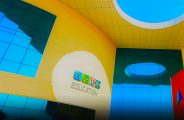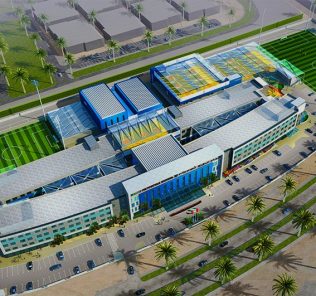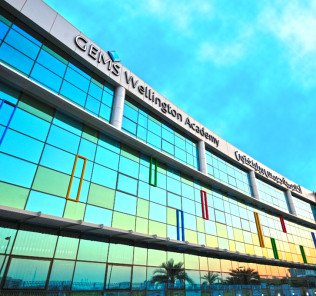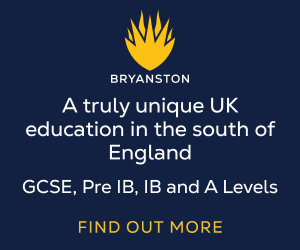British Pre-School Nursery Curriculum Guide & EYFS
Our pre-school guides have been written following requests from parents for us to help make sense of the early years choices facing them in deciding provision for their Child(ren). One concern that has been relayed to us is that parents, when visiting pre-schools as part of their shortlisting, face schools that to some degree seem “much of a muchness,” with children painting and generally carrying on activities that seem pretty standard and similar to what they would expect from simple day care. With the advent of the Covid 19 pandemic too, and impacts on nursery education, understanding the background to nursery approaches available to parents – and the benefits, opportunities and any drawbacks of each, has never been more important.
In the following, and related Pre-school Guides for the range of alternative curricular nurseries, we explore the differences between pre-schools, what you should expect as a parent, their underlying philosophies – and the perceived strengths and weaknesses of each.
In broad outline there are five different approaches adopted by pre-schools in the UAE, although in some schools these are combined on something of a ‘pick n’ mix’ basis:
(1) Traditional pre-school nursery – explored below
(2) Montessori – our Curriculum Guide can be found here.
(3) Reggio Emilia – our Curriculum Guide can be found here.
(4) Froebel
(5) Waldorf-Steiner
(6) The SchoolsCompared.com Top School Awards Best Nursery in the UAE Award 2019-20, here.
Setting the scene
Typically, nursery schools provide pre-primary education for children between 3 and 4 years (according to the date of a child’s birthday this may be on a scale between 2 1/2 and 5 1/2 years) of age prior to their entering mainstream compulsory education at FS/KG. Many nursery schools will, however, offer infant/play group care from earlier and seamlessly extend it through each child’s pre-school year(s).
Parents should be aware of National Child Care Standards operating in Dubai which set the framework you must expect from any provision regardless of which type of curriculum based pre-school you choose. Details follow below:
115611025618_nccp_standards_english-1
Taken together our Guides looks at all the various options open to parents seeking a pre-school education for their child(ren). Not all parents do; many parents seek to keep their children at home until primary school/phases. The argument for pre-school essentially comes down to its offering children three benefits in preparation for school; socialisation with other children and adults; more structured learning; and, independence from parents in thought and emerging self-reliance.
We make no judgement here except to say that there is no evidence that children educated in pre-school, as a rule, go on to excel or benefit over and above children that stay at home. If there is one certainty it is that early learning takes many forms and all of the above benefits, and others, can be nurtured at home. The single exception follows considerable evidence that for disadvantaged children, those without the benefits of a rich home life and parental engagement, pre-school education can very dramatically improve outcomes.
Any decision will always depend on the child, parental circumstances – and, central in that equation, the quality and type of pre-school on offer, our focus here.
And the truth is, pre-school provision is as complicated a decision for parents as that which must be faced at any of the later phases with many pitfalls, confusions, alternatives – and, unhelpfully, in nearly every case, a lack of data and accreditation to light the way.
Traditional or progressive pre-schools – the fundamental dilemma facing parents
The fundamental choice facing parents is whether to choose a traditional pre-school nursery (below we have discussed British pre-schools, but all traditional pre-schools share the same fundamental philosophy) or one of the progressive alternatives.
The dilemma, and stakes, we think, are captured best in the following question:
Am I willing to trade off preparing my children most effectively for later traditional schooling by choosing a progressive alternative – if I believe that they would be happier and will learn different, but just as important skills, if I do?
One misunderstanding of the differences between the two approaches follows the assumption that learning in progressive schools is play-based, where learning in traditional pre-schools, is formal. This is not the case. There is shared consensus across both that play-based learning is critical at this age.
In very simple summary the differences between the two approaches is as follows. Although we have highlighted the pure differences, these may diluted and blended by different schools.
| Traditional | Progressive |
| · Clearly defined, fixed and required outcomes for all children.
· Some flexibility is necessarily built into the curriculum in pace and style of teaching to reflect the differences between children. |
· No defined outcomes for all children.
· Outcomes are not defined, and individual, focused on the needs of each child. |
| · Fixed curriculum that applies to all children with specific areas and goals of study, attainment requirements and milestones. In British pre-schools this is formalised by the UK government in the Early Learning Goals of the Years Foundation Stage [EYFS] curriculum. | · No fixed curriculum or significant flexibility.
· According to the progressive curriculum some degree of guiding may take place through the choice of environment and toys provided. · Some progressive schools dilute this and integrate some outcomes. |
| · Formal measurement of student skills at 2 years and 5 years so that parents and teachers can properly measure each child’s achievements and added value. | · Measurement is rejected. |
| · Effective integration into the mainstream all-through curriculum so that children’s learning is aligned exactly to preparing children for later school. | · No formal integration at all. Where integration occurs it is arbitrary and not guaranteed. |
| · Teacher and curriculum, not individual child, directed learning.
· Teachers are authoritative and lead learning. · Teachers are the source of information.
|
· Learning is child-centred and determined by the child.
· The teacher is ultimately second to the needs of each child. · Teachers are facilitators, collaborators and/or friends · The child is the source of information. |
| · Clearly defined outcomes for all children. | · There are no clearly defined outcomes. |
| · Fixed curriculum that applies to all children with specific areas and goals of study, attainment requirements and milestones.
· In British pre-schools this is formalised by the UK government in the Early Learning Goals of the Years Foundation Stage [EYFS] curriculum. |
· There is no fixed curriculum and outcomes are individual. |
| · Formal measurement of student skills at 2 years and 5 years so that parents and teachers can properly measure each child’s achievements and added value | · There is no measurement of added value or flightpaths.
· In some progressive schools, each child’s activities over time are recorded. |
| · Learning is a mix of experiential, play-based and formal learning. | · Learning is exclusively experiential with no formal learning. |
| · Learning is based on compulsion. | · Learning is voluntary and self-defined in pace and subject |
| · Learning is by a mixture of discovery and memorisation. | · Learning is only by discovery. |
| · School is distinct from home. | · The line between school and home is blurred. |
| · Numeracy, Language, Writing and Reading are the foundations of teaching | · The senses are the foundations of learning. |
The British pre-school curriculum in focus
The key features of the British EYFS based pre-school education are:
- It is curriculum based.
There are three prime areas of core learning: communication and language (speaking, listening and experession); physical development; personal, social and emotional development. These are developed through developing each child’s knowledge and skills in literacy; mathematics; understanding the world; and expressive arts and design.
Children must be given access to a wide range of reading materials (books, poems, and other written materials) and develop mathematical skills (in counting, understanding and using numbers, calculating simple addition and subtraction problems; and to describe shapes, spaces, and measures.)
- Children are assessed.
Ongoing assessment “is an integral part of the learning and development process.” There is a formal progress check at age 2 and a final assessment at the end of EYFS in preparation for compulsory schooling.
- Teachers must be qualified.
The manager must hold at least a full and relevant level 3 qualification and at least half of all other staff must hold at least a full and relevant level 2 qualification.
- There are prescribed maximum teacher:child ratios
There are maximum (qualified) teacher:child ratios (1:3 to 2 years; 1:4 between 3 and 4 years; and 1:8 – 1:13 depending on the level of qualification between 4 and 5 years. These are minimums in the state sector. Private sector nurseries would expect to at least halve these.
The following document details in full the expectations prospective parents should have of British pre-schools in the Emirates.
Traditional British Preschool Nursery Standards Dubai
The following video, whilst long, captures the real difference in approach between progressive and traditional schools, in this case with regards to the strong emphasis on mathematics from a young age.
https://youtu.be/AnZOFYmp-_E
Integrating EYFS in Progressive schools
Whilst we have drawn attention to the fundamental differences between progressive and traditional British pre-schools, there are areas that meet. The Montessori schools in particular within the UK have found ways to deliver their core approach within the framework set by the UK government. The following document will be invaluable to parents who wish to visit Montessori alternatives to ascertain the degree to which they are able to deliver the same basic core knowledge as children in traditional schools.
Our verdict
Bottom line? The British EYFS preschool curriculum is, in practice a hybrid one, taking many of the best features of the progressive schools, particularly in its focus on child-led learning (more so at younger ages) and play-based discovery.
Because of this, the Montessori schools have found ways to work with EYFS, in ways that are much more difficult for the more radical progressives, including Reggio Emilia.
However, at its core, it is fundamentally different in its very defined set of expected outcomes for children, its rigid curriculum requirements and the central role the teacher plays in learning. Interestingly, there is no prescription on how children are taught – as long as all children meet the standards required in Year 5. There is huge scope to tailor the methods of teaching to the needs of individual children.
It is also a curriculum that provide very clear flightpaths for children with clear measurement of performance at age 2 and 5. There is very significant accountability to parents because parents can clearly benchmark and monitor their child(ren)’s performance over time. Children also graduate with assessments that transfer simply to compulsory through schooling.
The fundamental benefit, however, of the EYFS British pre-school approach, and traditional approaches to early years’ nursery education more broadly, is that children leave equipped with the definite skills, particularly in literacy and numeracy, necessary for a simple transition to compulsory all-through provision.
As importantly, because the role of the teacher is an authoritative one, and because education is significantly group, rather than individual child, focussed and defined, children do not face the significant culture shocks experienced inevitably by their progressive peers.
In practice this leaves parents with a perhaps less stark choice than one they would have to make faced with the extremes of a pure traditional and pure progressive school. EYFS may not be the best of all possible world, but, in the best British pre-schools with the resources to innovate in their delivery, materials and teaching, it arguably gets as close as it is possible to blend the two. Recommended.
© SchoolsCompared.com 2023. All rights reserved.
United Kingdom
UK DfE
Within the pre-school age of children between 2 years and 5 years (dependent on birthday)
Communication and language (speaking, listening and experession)
Physical development
Personal, social and emotional development
Literacy including reading
Mathematics
Understanding the world
Expressive arts and design.
Clear demarcation between school and home
Mixture of play based and traditional learning. Traditional learning increases at later ages. Percentage depends on the school and the individual profile of children.
Curriculum is balance of child focused to teacher-led. The best schools will pace learning and learning styles to the needs, interest and developmental stage of each individual child - but there are clear attainment targets that must be met and with which some children will struggle.
Clear demarcation between home and school. Homework is not introduced at EYFS in the significant majority of schools.
Progress is subject to continuous assessment and formal reporting and measurement is completed at age 2 and 5.
Costs vary widely but parents should expect premium fees.
Excellent. The style and structure of learning, particularly in later years is designed to make transition to all-through provision seamless.
EYFS provide an excellent grounding for children moving to traditional, compulsory all through provision at British, American, French, German, IB or Dual Curriculum Faith schools in the Emirates.
The curriculum is designed to meet to the needs of each individual child, including those with Special Educational Needs and Disabilities [SEND]. However, some children will struggle with the formal academic baseline requirements for literacy and mathematics.
The British pre-school curriculum has significant international currency. Traditional pre-school approaches still dominate global provision, providing seamless transition to later all-through schooling.
• Blending of progressive and traditional approaches
• Seamless transition to all-through schooling
• Clear curriculum and measurable outcomes
• Transferability across deferent all through curriculums
• Significant mathematical and literacy element
• Designed so “no child is left behind”
• Highly qualified teachers in the best schools
• Challenging for some pupils
• Lacks the whole child focus of progressive curricular
• Arguably progressive curricular have the edge on building analytic skills and self-reliance
• Some question the value of pre-school education – "children should have a childhood."









































































Leave a Response